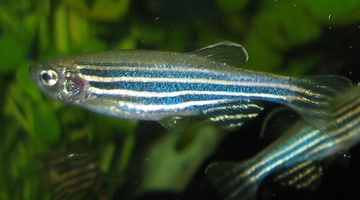How do scientists control the spawning of their zebrafish?
Transcript
Peter Cattin (Auckland University): We keep them at relatively high densities until we are ready to breed from them. Then, as we would like to use them for spawning , we will thin them down, they will grow, and the extra food is used for gonadal development. They’ll become ripe and we’ll be able to spawn from them. At that point we will also separate them, males and females, because they will quite happily spawn in here of their own accord at times we don’t particularly want them to spawn.
We put four males and three females in a tank at the same time. That sort of frenzied activity of all those fish helps induce the spawning. Then we won’t spawn them again for about 10–14 days so that they have a chance to recover from that stressful event. However, they can spawn every week.
The spawning of zebrafish is induced by the light cycle and this room, like most zebrafish rooms, runs on a 14 hour night – 10 hour day. When the lights come on at nine o’clock in the morning, which is a time that we set for our own convenience, within about half an hour of that the fish will generally have spawned.
These are fully mature adults that have been spawning for probably six months. These fish can spawn once a week. The ovarian cycle is only seven days so we can spawn the females every week and get 200–500 eggs per female, per spawn. So that makes a large number of embryos, which have all got similar genotype obviously because they have all come from the same mother and father, available once a week.


